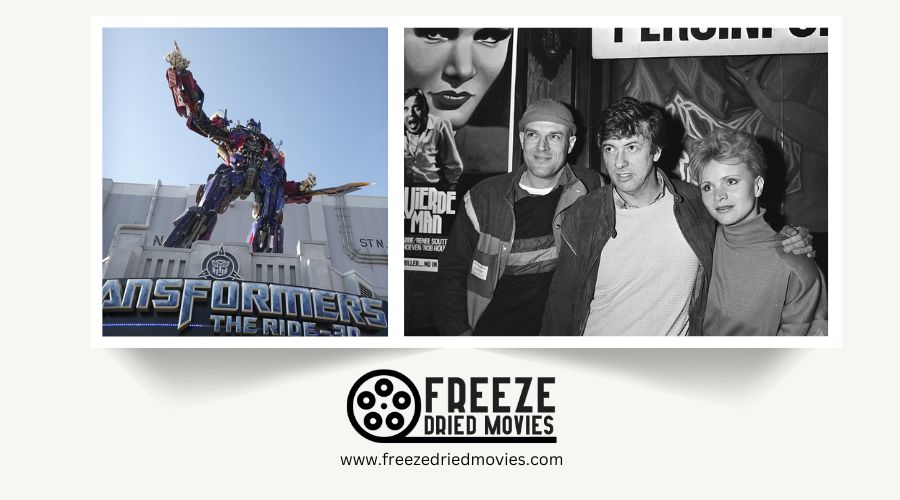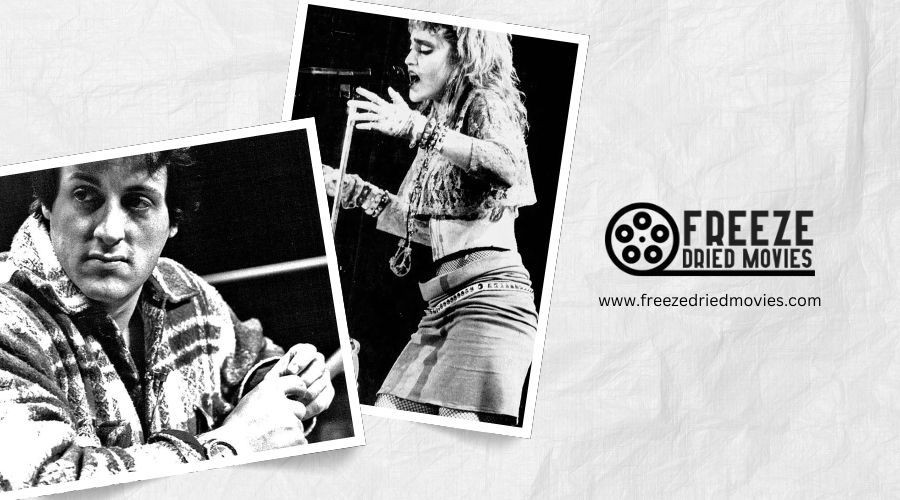Which Movies Have Won the Razzie for Worst Pictures?

The Razzie Awards have dishonored films like "The Pirate Movie," "Xanadu," and "Transformers: Revenge of the Fallen" as Worst Picture winners. You'll find both box office bombs like "The Last Airbender" and surprising hits among the recipients. Even acclaimed directors like Francis Ford Coppola and stars like Sylvester Stallone (9 wins) haven't escaped this infamous recognition. The complete history of Hollywood's biggest failures reveals surprising patterns across four decades.
Key Takeaways
- Notable 1980s Razzie Worst Picture winners include "The Pirate Movie," "The Lonely Lady," "Can't Stop the Music," and "Xanadu."
- Some commercially successful films like "Transformers: Revenge of the Fallen" and "Twilight: Breaking Dawn Part 2" won Worst Picture despite strong box office performance.
- Acclaimed directors including Francis Ford Coppola, Paul Verhoeven, and M. Night Shyamalan have had films win the Worst Picture Razzie.
- Major franchise installments that won Worst Picture include entries from Batman, Transformers, Twilight, and Fifty Shades series.
- A-list stars in Razzie Worst Picture winners include Sylvester Stallone, Madonna, Eddie Murphy, and Demi Moore.
The Origins of the Golden Raspberry Awards
While prestigious award shows celebrate Hollywood's finest achievements, the Golden Raspberry Awards, or Razzies, honor the exact opposite. This counterpoint to the Oscars began humbly in 1981 in John J. B. Wilson's living room with just three dozen people in attendance.
The Razzie Awards quickly gained traction by strategically scheduling their ceremony one day before the Academy Awards, attracting media attention for their celebration of the year's worst films. By their fourth year, CNN and major wire services were covering this parody of Hollywood's self-congratulation.
Unlike the exclusive Oscars, the Razzies operate with approximately 650 paying members from 19 countries. The awards ceremony presents winners with a distinctive golf ball-sized raspberry mounted on a film reel, perfectly symbolizing commercial failure in the entertainment industry.
The inspiration for the Razzies came after Wilson attended a double feature screening of Can't Stop the Music and Xanadu, both widely considered cinematic disasters.
Notorious Worst Picture Winners From the 1980S
The early years of the Razzie Awards cemented their reputation for skewering Hollywood's most embarrassing failures, with the 1980s delivering particularly memorable disasters.
1983 proved to be a contentious year with two films sharing the worst Razzie honor: "The Pirate Movie," an awkward musical adaptation, and "The Lonely Lady," Pia Zadora's critically panned drama about Hollywood's seedy side.
Like the Worst Screen Couple award that Al Pacino received for his role in "Jack and Jill," these early Razzies acknowledged truly egregious cinematic missteps.
Box Office Bombs That Earned the Razzie's Top Dishonor
Despite their critical failures, not all Razzie Worst Picture winners proved to be financial disasters. Transformers: Revenge of the Fallen (2009) managed to be both critically panned and commercially successful, doubling its $200 million budget with $402.1 million at the box office. Similarly, The Twilight Saga: Breaking Dawn - Part 2 (2012) raked in $292.3 million despite being among the bad movies nominated for Worst Picture.
Other Razzie Award winners weren't so lucky. The Last Airbender (2010) lost nearly $20 million, while Jack and Jill (2011) barely broke even. The most catastrophic financial failure among these winners was Movie 43 (2013), which earned a measly $8.8 million against a $6 million budget. This illustrates that while the Worst Picture award often identifies creative failures, it doesn't always predict box office performance. Audiences were willing to pay steadily increasing ticket prices throughout the 2010s, with the average cost rising 25% from $6.92 in 2012 to $8.65 in 2022.

Critically Acclaimed Directors Who Faced Razzie Humiliation
Even celebrated auteurs aren't immune to the Razzie's scorn, as several award-winning directors have found their names among the infamous "worst" lists. Francis Ford Coppola recently embraced his Razzie nominations for "Megalopolis" as a badge of honor, despite being up for Worst Director, Screenplay, and Picture.
Paul Verhoeven made Razzie history as the first director to actually attend and accept his awards for "Showgirls." Meanwhile, M. Night Shyamalan, once praised for "The Sixth Sense," faced humiliation when "The Last Airbender" earned him Worst Director and Picture dishonors.
Comedy director Dennis Dugan joined this club when his Adam Sandler collaboration "Jack and Jill" swept the Razzies. Perhaps most surprising was Oscar-winner Tom Hooper's fall from grace when his "Cats" adaptation earned him Worst Director.
Interestingly, Coppola's early career was launched under the mentorship of Roger Corman, whose low-budget filmmaking approach proved that compelling storytelling doesn't require extravagant production values to achieve success.
Franchise Films That Crashed and Burned With Razzie Wins
While celebrated directors occasionally stumble into Razzie territory, major film franchises have suffered some of the most public and embarrassing falls from grace. When a big-budget series entry crashes with critics and wins Worst Picture, it can permanently damage the franchise's reputation.
- The *Twilight Saga: Breaking Dawn - Part 2 won in 2012, cementing the vampire romance series' critical reputation despite its commercial success.
- ifty Shades Of Grey* earned its Razzie in 2015, turning what could've been a respected adaptation into a laughingstock.
- *Batman & Robin* (1997) nearly killed the Batman franchise until Christopher Nolan revived it years later.
- *Transformers: Revenge of the Fallen* (2009) won Worst Picture despite massive box office returns, though *Batman v Superman* would later follow a similar path.
A-List Stars in Razzie-Winning Disasters
The glittering careers of Hollywood's biggest names haven't protected them from the notorious golden raspberry trophies. Even Oscar winners like Sandra Bullock and Halle Berry have graciously accepted their Worst Actress awards, showing humility when their performances missed the mark.
Sylvester Stallone holds the unfortunate record with 9 Razzie wins, despite his iconic Rocky and Rambo franchises. Madonna follows with 5 "Worst" trophies, proving music stardom doesn't guarantee acting success. Demi Moore's 4 Razzies for films like The Lonely Lady highlight how dramatic talents can appear in critically panned projects.
Comedic powerhouses aren't immune either. Eddie Murphy and Tyler Perry have collected 5 and 4 Razzies respectively. Their involvement in Worst Picture recipients demonstrates that box office success doesn't always align with critical acclaim.
Cult Favorites That Were Initially Razzie Recipients
Not all Razzie-winning films deserve permanent shame. Several movies once ridiculed as the "worst" have found redemption as cult classics that audiences appreciate for qualities initially overlooked.
Showgirls (1995) evolved from embarrassing flop to celebrated satire of Hollywood excess, with Paul Verhoeven's deliberately over-the-top direction now recognized as intentional commentary.
Hudson Hawk (1991) transformed its reputation through dedicated fans who embraced its cartoonish slapstick and quirky stylization that critics initially rejected.
Rambo: First Blood Part II (1985) gained appreciation as an iconic Cold War film that cleverly subverted its predecessor's anti-war message.
Cocktail (1988) and The Postman (1997) have both found niche audiences who value them as fascinating time capsules with production qualities that overshadow their narrative shortcomings.
The Financial Impact of Winning Worst Picture
Despite common assumptions, earning Hollywood's most notorious dishonor rarely affects a film's bottom line in significant ways. The Worst Picture Razzie Winners often maintain healthy profits despite critical drubbings on Rotten Tomatoes.
Consider "The Twilight Saga: Breaking Dawn - Part 2," which earned multiple Razzie nominations but still grossed an impressive $829 million worldwide. While "Cats Dominates 40th Golden Raspberry Awards" made headlines, its box office failure wasn't caused by the trophy itself.
Interestingly, some films have even leveraged their Razzie status advantageously. "Winnie-the-Pooh: Blood and Honey" embraced its poor reception to attract genre fans, while other recipients have later earned the "Razzie Redeemer award" after initially being panned. For most movies that win both Worst Picture and Worst Director, audience interest still trumps critical reception.
Recent Razzie Winners: Has Hollywood Quality Declined?
Over the past decade, Razzie winners have piled up from major studios and independent productions alike, raising questions about Hollywood's overall quality standards. You'll notice a concerning pattern when examining recent "winners":
Hollywood's obsession with profit over quality continues to yield a disturbing parade of cinematic disasters deserving of Razzie recognition.
- Blockbuster misfires like *Transformers: Revenge of the Fallen*, *The Last Airbender*, and *Cats* demonstrate how massive budgets don't guarantee quality
- Star-studded disasters including *Jack and Jill*, *Movie 43*, and *Holmes & Watson* suggest talent alone can't save poor concepts
- The recent inclusion of indie films like *Winnie-the-Pooh: Blood and Honey* indicates quality issues extend beyond major studios
- *Madame Web*'s 2023 Razzie sweep (Worst Picture, Actress, Screenplay) highlights continuing struggles to develop compelling content
While the Razzies themselves face criticism for targeting obvious failures, the consistent stream of poorly-received films raises legitimate concerns.




